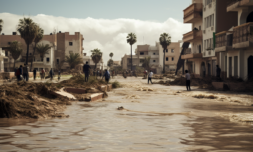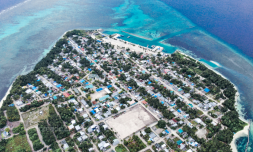Last week, approximately 25cm of rain – roughly twice the UAE’s yearly average – fell in a single day, leaving much of the city’s outdoor infrastructure under water. This has sparked a debate about weather modification.
In parts of the Northern Hemisphere, April is known as the month of showers.
This is due to the spring shift in weather patterns and is great for plant growth, particularly at a time when global temperatures are rising and our summers are far longer, hotter and drier than ever before.
In the notoriously arid United Arab Emirates, however, April showers aren’t all that common.
In fact, the country sees just 100mm of rainfall per year, which is why last week’s freak downpour – the most extreme of such an event since records began in 1949 – has meteorologists so concerned.
Over an unprecedented 48 hours, the skies over the UAE darkened and torrential storms washed away the capital city’s picture-perfect image. Approximately 25cm of rain fell in a single day, leaving much of Dubai’s outdoor infrastructure under water.
Highways turned to rivers as drivers were forced to abandon their vehicles, homes and businesses were damaged, and one of the world’s busiest airports was significantly disrupted.
Twenty people are also reported to have been killed in the neighbouring country of Oman and the recovery is anticipated to be slow as, given Dubai is in the middle of a desert, many of its heavily urbanised areas have scarce green space to absorb the moisture and little to no drainage facilities (which is why the city was so overwhelmed by runoff in the first place).
‘It was like the apocalypse,’ a British expat living there told the BBC. ‘It felt like midnight in the middle of the afternoon.’
In dramatic footage of the floods, residents were seen jet-skiing through streets, planes were forced to land in what looked like an ocean, and cars were swept up by the deluge.
According to forecasters, the chaos was caused by a cluster of four large storms, each of them towering 15 kilometres into the atmosphere and fuelled by powerful jet streams, rolling into the UAE one after another.
On social media, users have been speculating if the country’s longstanding cloud seeding programme is to blame for this and a debate has been sparked among scientists about weather modification.
Cloud seeding, or ‘pluviculture,’ is a practice employed in countries with low rainfall, like the UAE.
To artificially stimulate downpours, small government-operated aircrafts fly through clouds and burn special salt flares that encourage small rain droplets to stick together. Once heavy enough these larger droplets will then fall to Earth as rain.




















